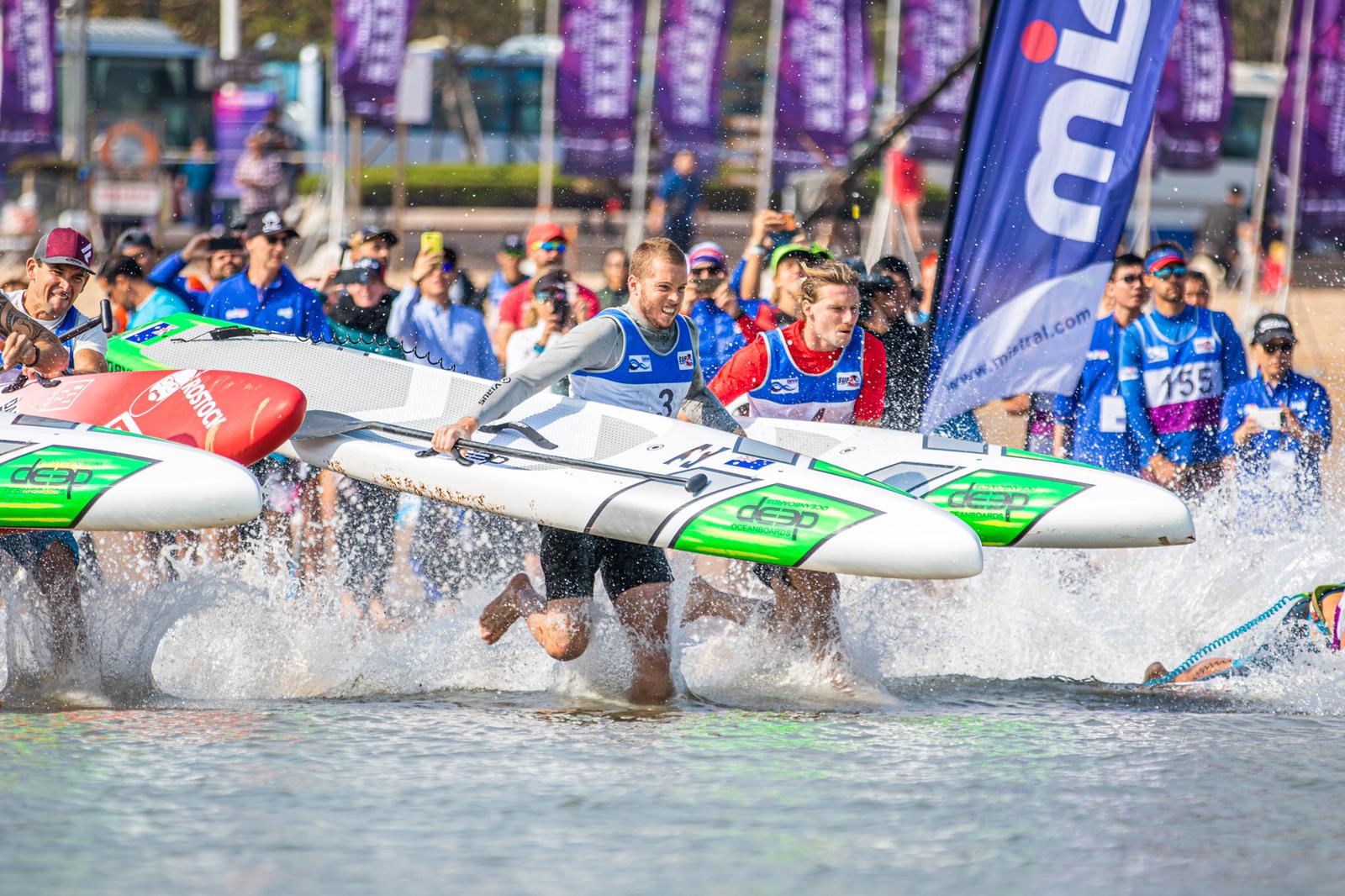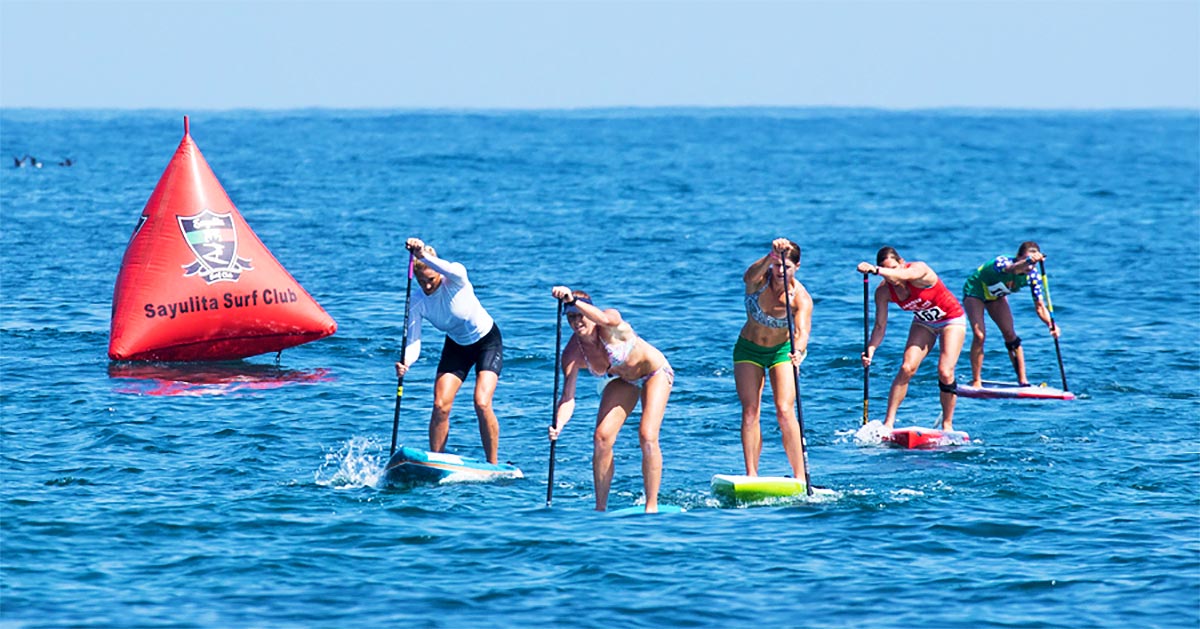
3.8 Reasons Why the ISA Should Embrace Gender Equality at the World Championships

The top women at last year’s ISA World Championship in Sayulita (photo: Reed/ISA)
The ISA World Championship has come a long way over the past four years, now ranking as one of the premiere events on the international calendar. But while there are a lot of positives, there are still many issues the ISA needs to address, and one in particular stands out: Women’s participation. Or lack of it.
At the ISA Worlds, men have twice as much opportunity to represent their nation as women, with each team allowed 2 men but only 1 woman per event.
On the surface that appears to be blatant gender discrimination, however there’s more to the issue, including the fact there are 3.8x more men competing in elite events around the world than women, suggesting the ISA is actually over-representing.
But while the wider paddling landscape doesn’t directly suggest including more women at the Worlds, I believe we need to use ‘positive discrimination’ to help correct the issue, otherwise the imbalanced status quo will not only remain, it will become ingrained in our sport.
And as the self-appointed “governing body” of stand up paddling, I believe it’s up to the ISA to take a lead role on this.
I’m not going to get into the whole gender equal prize money debate (there are valid arguments on both sides), however it seems fairly straightforward that women should at least have the same basic opportunities to participate as men do.
Firstly, there’s the moral argument, i.e. that it’s 2016 and that gender equal access is a basic right. There’s also the question of the Olympics, which heavily favours gender-equal participation and in which the ISA is trying to land SUP racing. Thirdly, it could also be argued (quite easily) that having more women from each nation would make the women’s events more exciting.
Those are the arguments in favour.
The single argument against is quite simple: Women compete in such significantly lower numbers than men across the entire sport of SUP racing that perhaps forcing gender-equal participation at the Worlds would be a bandaid solution, one that turns a blind eye to the underlying causes.
My view is somewhere in between: No, the raw participation numbers don’t suggest women should necessarily have equal participation at the World Championships, however gender equal access is kind of a basic right. And although we should indeed focus on the underlying causes, if we have a chance to force a correction in this imbalance (and we do when it comes to the ISA Worlds), we should take it. Positive discrimination.
But before we continue, let’s look at the stats and see what’s really happening in the sport.
Breaking down some of the biggest events over the past 12 months, we can see a glaring gap between men’s and women’s participation at the highest level (i.e. the “elite” races). Even at some of the biggest races around the world, it’s not uncommon to see a single digit total of women — at one particular marquee event last year there were just four ladies on the start line.
Based on the half a dozen big events below, the ratio of men to women in elite SUP racing is precisely 3.84:1, or in other words, there are nearly four times as many men competing. For every 100 elite guys there’s only about 25 elite women.
That’s a hell of a gap.
Gender participation in elite races
| Event | Men | Women | Ratio |
|---|---|---|---|
| Lost Mills (elite) 2016 | 124 | 33 | 3.76 |
| Carolina Cup (elite) 2016 | 127 | 33 | 3.85 |
| Paris Crossing (elite) 2015 | 81 | 15 | 5.40 |
| Molokai (solo) 2015 | 45 | 14 | 3.21 |
| PPGs (elite) 2015 | 92 | 24 | 3.88 |
| The Gorge (elite) 2015 | 55 | 17 | 3.29 |
| TOTAL | 524 | 136 | 3.84 |
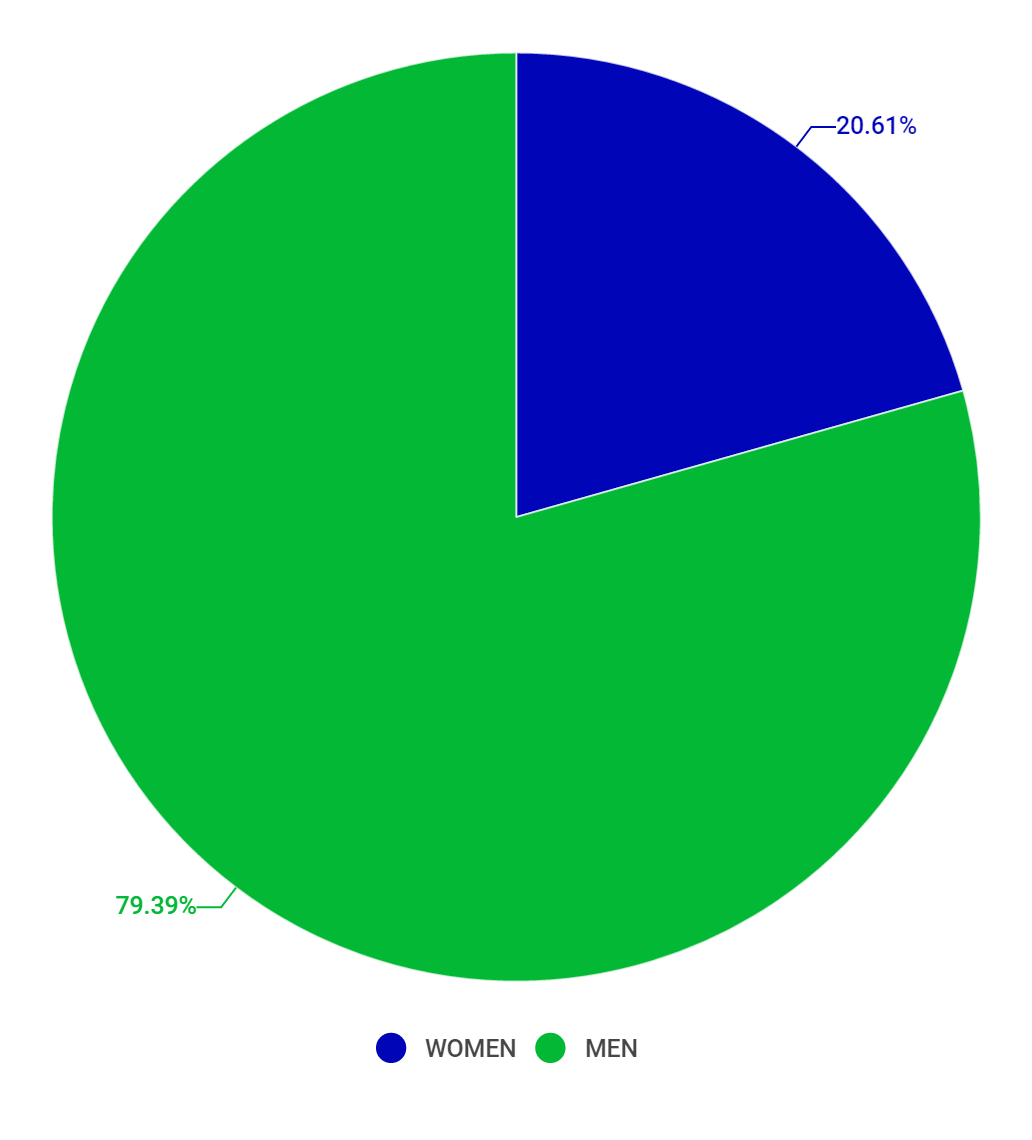
This lopsided ratio is mirrored in other key stats, such as the number of athletes who have completed the minimum “best five” results on our World Rankings.
There are currently 52 men holding the minimum number of results to produce an accurate ranking, however only 14 women have raced in at least five big events over the past 12 months. That’s a ratio of 3.71, or nearly identical to the 3.84 shown above.
But this is just in the elite divisions. How do things look in the open races?
Better, but still lopsided.
Gender participation in elite races vs amateur races
| Elite vs. Amateur | Men | Women | Ratio |
|---|---|---|---|
| Carolina Cup (amateur) 2016 | 194 | 152 | 1.28 |
| Carolina Cup (elite) 2016 | 127 | 33 | 3.85 |
| Carolina Cup (overall) 2016 | 321 | 185 | 1.74 |
| Paris Crossing (amateur) 2015 | 292 | 87 | 3.36 |
| Paris Crossing (elite) 2015 | 81 | 15 | 5.40 |
| Paris Crossing (overall) 2015 | 373 | 102 | 3.66 |
As you can see, the amateur divisions at the Carolina Cup (the Harbor Island and Money Island races) are probably the closest thing we’ve got to gender equal participation in our sport, however when they’re added in with the elite divisions the world’s largest event still has an overall ratio of nearly 2:1 (1.74 to be exact).
Though perhaps the Carolina Cup is exceptional, because the second biggest race of the year (Paris) has a ratio of 3.66 even with all the amateur divisions included, which is in line with the 3.84 average of the “elite only” divisions above.
So no matter which way you look at it, men’s SUP racing participation heavily outweighs women’s. That’s hardly shocking — anyone that’s spent five minutes in the ocean knows there are far more men on the water (though even I was a bit surprised by just how lopsided the stats are).
The underlying reasons “why” are varied and complex. Is it a lack of sponsorship opportunities and travel budgets? Is it a cultural thing? Does it speak to a wider chauvinist sporting complex? Perhaps it’s because the younger women’s generation has been slower to embrace the sport than the junior guys (based on my quick calculations, the average age of elite men is significantly lower than elite women).
Perhaps there’s simply an unhealthy perception that “elite” racing is for men only, which could explain the difference between elite and open race participation within each gender.
For example at the Carolina Cup, the ratio of amateur men to elite men is 1.53 (194 amateur/127 elite), suggesting that guys have little hesitation stepping up from the open race to the elite race. However for women that number balloons out to 4.61 (152 amateur/33 elite), suggesting the existence of a “glass ceiling” between the recreational and elite forms of SUP racing.
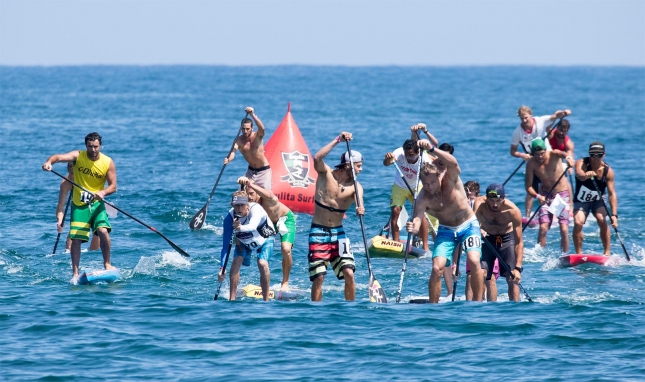
The ISA gives men twice as much representation as women; Right or wrong? (photo: ISA)
But right now the precise reasons don’t really matter. We could (and eventually should) debate them further, but right now I think it’s more important to focus on immediate actions that can address the imbalance. Because surely we can all agree our sport will be a lot healthier if we have more women participating at the top end.
And when it comes to immediate actions, I don’t think there’s any simpler or more practical solution than giving women the opportunity to participate equally at the ISA World Championship.
No, it won’t completely solve the problem overnight, but I firmly believe it will help. It will set a clear benchmark and send a strong signal that the “governing body” is encouraging women to enter the elite side of stand up.
Gender equality at the ISA Worlds will show everyone there’s just as much room for women as there is for men at the top of our sport.
So that’s why I’m calling on the ISA to change the rules for the World Stand Up Paddle and Paddleboard Championship in Fiji (November 12-20) to allow two women per country per event.
Sure, in some events it’s probably not a wise move, such as women’s prone paddling where most countries can’t even field one woman, let alone two. However there’s a big question mark over whether prone will even remain in the event beyond 2016 anyway, so for argument’s sake let’s focus on the stand up paddling events for now.
And if the ISA wanted to take baby steps on this issue, perhaps they could simply introduce gender equality in the SUP racing events for Fiji 2016 – because that’s where women have the strongest representation already – and then expand it to the other events in 2017.
One alternative I also heard recently (from a top female athlete) was to have 2x women per team per event but also increase it to 3x men, however I doubt the ISA would want to increase the size of teams by that much in one single step.
So it seems the easiest thing is to just announce that each country can enter two women per event at Fiji 2016, at least for the SUP racing events, where the average level and depth of talent around the world is arguably stronger than in SUP surfing (and is definitely stronger than prone racing).
But will the ISA embrace this idea? While the Association has been criticised in the past for being a slow-moving bureaucracy, surely this can’t be too hard to implement: Just notify the teams, make an announcement and it’s happy days for everyone. Who could possibly *not* want this to happen?
Either way, if it’s going to happen it needs to happen now, because some nations have already selected their teams and many more will follow suit in the coming weeks. If we’re going to have gender-equal participation at the 2016 Worlds in Fiji, I think it has to be announced by the end of this month.
I’ve asked the ISA about this in the past, and they’ve always taken a pragmatic approach; “It would be nice, but is it realistic?” is the general answer.
With time running out, this week I followed up and asked honourary Vice-President Casper Steinath for his take:
“I personally really hope to see the women’s side of the sport keep developing and reaching its full potential! Many of the girls out there racing and surfing right now are incredible athletes and true fighters both on and off the water. As in general within the IOC, it is also a major goal for the ISA to reach gender equality inside the sport of surfing and stand up paddling and to increase female participation numbers in the sport of SUP in general. The ISA will be looking further into this matter and exploring how we together create the best possible future for Women in the sport of SUP.”
It’s great to hear they’re supportive, though the response is a little too vague and doesn’t really say anything about making a clear decision one way or another. And without a clear decision, the status quo remains.
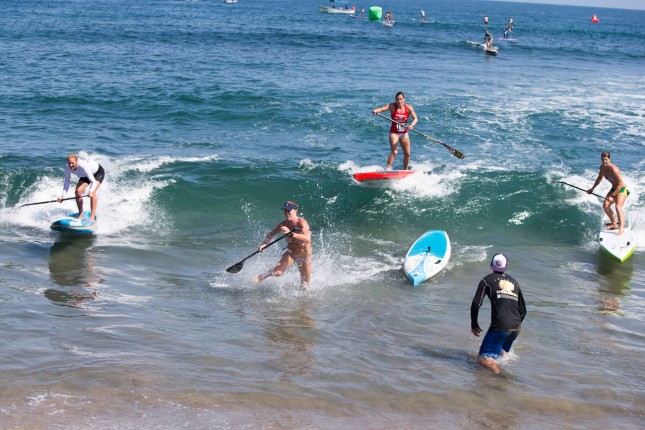
Candice Appleby leads (from L-R) Penelope Strickland, Lina Augaitis and Terrene Black during the 2015 ISA Worlds (photo: Bielmann/ISA)
To summarise, there are three main arguments for having gender equal participation at the ISA Worlds:
1. The moral argument (i.e. gender equality is a right)
2. The Olympic argument (i.e. the Olympic Games favours gender equal participation, and that’s where the ISA is trying take this sport)
3. The “excitement” argument, which says that women’s events would be more exciting and entertaining if there was a larger and deeper field of talent on the water. With just 2 guys allowed per race, even the men’s events at the ISA Worlds can feel small, however on the women’s side they often seem tiny.
Throw in the fact that the women’s sport is more concentrated in a few countries compared with the men’s and the problem becomes even more severe. Having just one woman per team per event is limiting not only the size but more importantly the depth of talent on the start line. By having just one woman per team, world class athletes from nations such as Australia and the U.S. have no chance to compete at one of the biggest races of the year, while developing nations miss the chance to develop their women to the same degree as their men.
(Side note: This whole issue is the reason I gave the ISA Worlds a 5-star rating with an asterisk* this year — as I’ve stated on the Season 2016 Star Ratings from the very beginning, if there’s still only 1 woman per team per race in Fiji, the entire event will automatically revert to 4-stars, otherwise there would be too much of an imbalance between the guaranteed minimum Race Index score and the actual score.)
But while the three points above are very important, the fourth argument is surely the most critical: We need positive discrimination to help correct the imbalance in women’s participation, and if the “governing body” won’t lead by example, who else is going to take up the cause?
So even though men participate in elite racing 3.8x times more than women around the world, the ISA should embrace gender equal participation as a form of positive discrimination that sets a leading standard. Because if the ISA takes no action then the imbalanced status quo not only remains, it becomes ingrained.
The ISA didn’t create this problem, but they can certainly help fix it.



